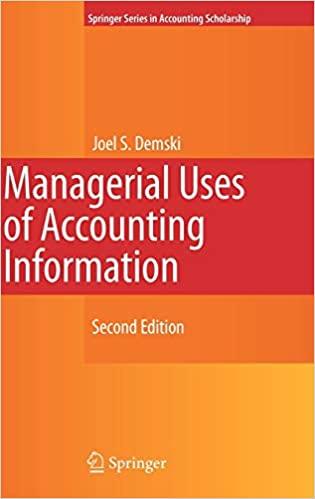15. value of information Ralph is contemplating four possible choices, cleverly labeled one, two, three and four.
Question:
15. value of information Ralph is contemplating four possible choices, cleverly labeled one, two, three and four. The outcome of any choice depends on the state of the economy. For analysis purposes, Ralph models this as four equally likely states. The net gain to Ralph, as a function of the option chosen and state of the economy, is displayed below.
s1 s2 s3 s4 one 100 90 30 20 two 30 20 100 90 three 30 150 30 30 four 30 30 30 150
(a) Calculate the expected utility for Ralph for each of the four choices. Assume here, and only here, that Ralph is risk averse with utility measured by the square root of the gain. What is the certainty equivalent for each of the choices?
(b) Again calculate the expected utility for Ralph for each of the four choices. But assume here and for all remaining parts of the exercise that Ralph is risk neutral.
(c) Suppose before acting Ralph can learn, from an expert forecaster, whether the state of the economy will be in {s1, s3} or will be in {s2, s4}. Notice the mnemonic of "odd" or "even."
If the forecaster says odd, for example, then Ralph knows the state will be s1 or s3, just not which one. What is the maximum amount Ralph would pay for this forecaster’s service?
(d) Suppose instead of the "odd" or "even" story a second forecaster is able to forecast whether the state will be in {s1, s2} or in {s3, s4}. Notice the mnemonic here of "low" or "high." What is the maximum amount Ralph would pay for this second forecaster’s service? This should be answered on the assumption Ralph does not hire the first forecaster.
(e) Finally, suppose the two forecasters jointly approach Ralph and offer to combine their services. What is the maximum amount Ralph would pay for the joint forecasting service?
(f) You now have three value of information calculations: the first source, the second source, and the two sources together. Notice additivity is not present. The sum of the first two values does not equal the third. Why is additivity not present here?
Step by Step Answer:






